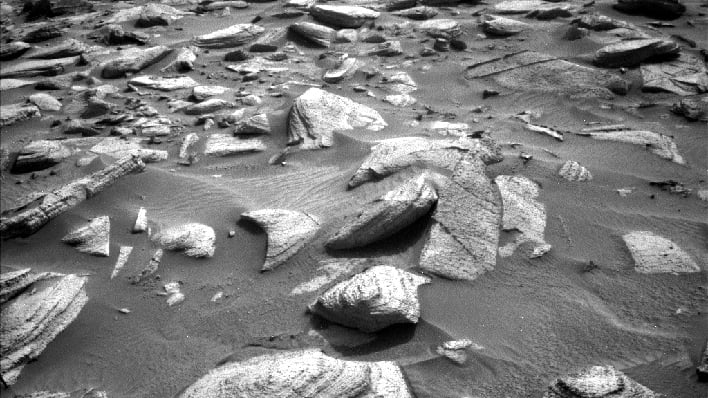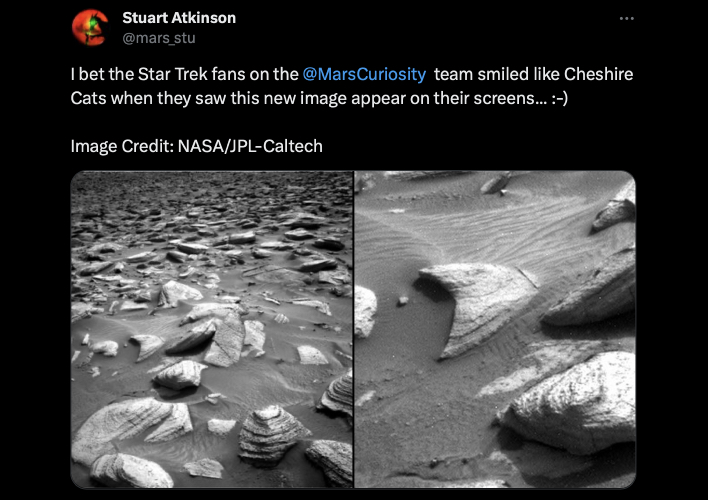NASA’s Martian Rover Makes An Illogical Discovery That Star Trek Fans Will Love

NASA’s Curiosity rover took the image on Sol 4062 by its Left Navigation Camera. Stuart Atkinson, an amateur astronomer, saw the image posted by NASA and made the correlation between the noted rock and the Star Trek insignia. He posted his find on X/Twitter, remarking, “I bet the Star Trek fans on the @MarsCuriosity team smiled like Cheshire Cats when they saw this new image appear on their screens.”
One person replied, “This must be their head office in mars..,” while another poignantly replied, “to boldly go where no one has gone before”.
The official Star Trek website reported that the delta insignia was first drawn in 1964 by costume designer William Ware Theiss, along with input by series creator Gene Roddenberry. The insignia, referred to by Weiss as “Arrowhead,” evolved into the iconic symbol that Star Trek fans love to this day.
The symbol also portrayed information about the person wearing it aboard the ship using a series of division symbols. An example was one worn by none other than Captain James T. Kirk of the Starship Enterprise, which included an elongated “star,” representing someone assigned to the Command division. A delta insignia that displayed a “planet” symbol stood for someone representing the Sciences division, while a stylized “e” stood for Engineering (later Operations).
As for Curiosity, the Mars rover first landed on the Red Planet on August 5, 2012. It is capable of climbing over knee-high obstacles and can travel at about 100 feet (30 meters) per day, according to NASA. A radioisotope power system that generates electricity from the heat of plutonium’s radiation decay powers the rover. NASA says that the electrical power source has already far exceeded its required operating lifespan of at least one Martian year (687 Earth days).
While Curiosity continues to explore the Red Planet, it collects rock, soil, and air samples onboard for analysis. Its purpose was to answer whether Mars ever had the right environmental conditions to support small life forms called microbes. As the rover sends more images back from Mars, there will more than likely be more “illogical” connections made by those here on Earth. May Curiosity “live long and prosper!”


